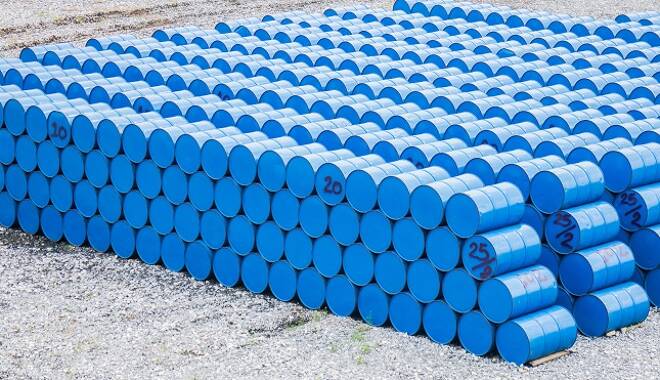Advertisement
Advertisement
Oil Expected To Remain Bearish
By:
Oil prices ended a disastrous week with a bit of a bounce on the weakness in the US dollar. Crude oil had looked like it would violate the $40 price level
Oil prices ended a disastrous week with a bit of a bounce on the weakness in the US dollar. Crude oil had looked like it would violate the $40 price level but was saved late in the session close out the week at a bit above $41 with Brent oil getting support at the $43 price level. It is expected without any major economic events and aside from any new geopolitical stress that oil should remain bearish all week. As supertankers all sitting all over the globe with hulls packed with oil and nowhere to go and Middle East producers keep the taps open wide the oil fight still continues.
Yearly increases in Middle East refined product output are not new. In the period 2011-2015, combined output of the five main products (naphtha, gasoline, jet fuel, diesel and fuel oil) rose by an annual average 210,000 b/d. In 2016, we expect a 550,000 b/d increase, which is also noteworthy as it exceeds demand growth of just 180,000 b/d for those products. The transition of the Middle East refining region into a net exporter of petroleum products has been bearish for global refined product market fundamentals in recent years. It has been a major contributor to the fall in product market “dominoes” that ESAI Energy has used to describe a succession of bearish turns in product price spreads to crude oil from LPG to diesel to gasoline.
The recent correction in gasoline spreads—assisted by increases in export volumes from India and China—is part of this phenomenon. As a result, product exporters in Asia, Europe and North America will need to compete in new markets or against new players in traditional ones. That competition will continue to pressure refining margins and threaten operations at the least competitive refineries.
Oil refiners rocked by a market glut in Asia are finding some solace as what was expected to be a flood of fuel from China’s private processors is proving to be a benign trickle.
While the Chinese companies known as teapots were expected to swamp the market after they received government approval to ship supplies overseas, a lack of facilities to transport products from plants to ports has hindered such plans. For instance, one of the refiners took two months to fill a single ship of 35,000 metric tons after having to repeatedly cart the fuel in 30 ton trucks, according to BMI Research.
Teapots have gained prominence over the past year after the government relaxed rules governing their oil purchases and sales. Processors elsewhere in Asia and beyond braced for more competition while already grappling with rising supply from state-owned giants such as China Petroleum and Chemical Corp. But insufficient storage capacity, few pipelines connecting facilities with ports and a lack of trading relationships abroad mean the teapot threat is yet to bite.
Because refiners produced too much fuel from cheap crude, margins in the Americas, Europe and Asia have fallen sharply this year, eroding revenues for oil producers and refiners like Royal Dutch Shell, which this week reported poor results.
Brent crude prices extended losses on Friday as recent oil data intensified investors’ fears on oversupply in the market.
The Energy Information Administration (EIA) said in its weekly report on Wednesday that U.S. oil inventories rose 1.7 million barrels last week to 521.1 million barrels, ending a 7-week streak of declines and beating market consensus of a 2.3-million barrels decrease.
About the Author
Barry Normanauthor
Did you find this article useful?
Latest news and analysis
Advertisement
